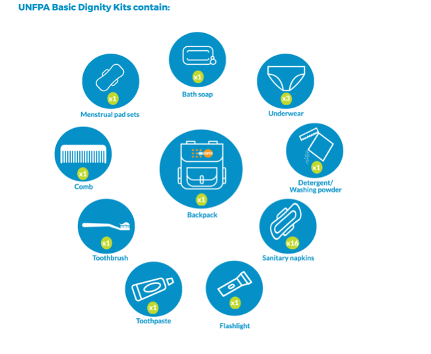Consultation guide to inform the development of Dignity Kits customised for women and girls with disabilities
Introduction
The Asia Pacific is one of the world’s most disaster-prone regions, experiencing frequent and intense natural hazards, from typhoons and floods to earthquakes and tsunamis. Indeed, the average number of fatalities from disasters (calculated as percentage of the total population) is highest in South and South-west Asia, followed by South-East Asia and the Pacific1.
In addition to sudden-onset disasters, the region also faces various protracted crises, with accumulating humanitarian needs in countries such as Afghanistan, Myanmar, and Bangladesh. During crises, women and girls face heightened risks, particularly in relation to their health, safety, and access to essential services. Disruptions to healthcare systems limit access to sexual and reproductive health (SRH) services, including maternal care and family planning, while displacement and overcrowding in shelters increase the risk of gender-based violence (GBV), including sexual exploitation and abuse. Additionally, inadequate access to menstrual hygiene supplies and private sanitation facilities can compromise dignity, mobility, and overall well-being.
Dignity Kits are a vital component of UNFPA’s humanitarian response, designed to promote the mobility, wellbeing and safety of women and girls during emergencies by providing age, gender, and culturally appropriate garments, sanitary supplies, basic hygiene items, and other items such as whistles and torches to promote safety. They are often prepositioned to ensure rapid distribution within 72 hours after a disaster strikes, enabling timely support for those in need.
Dignity Kits play a critical role in restoring dignity and autonomy in crisis situations by enabling women and girls to maintain their personal hygiene and enabling them to move freely and safely and to participate in daily life and the rebuilding of communities.
Dignity Kits also enable affected women and girls to leave their homes, evacuation centres or camps to access humanitarian aid and life-saving services. Recognising the diverse needs of different communities, Dignity Kits can be adapted to local contexts, with their contents varying from country to country. Customised Dignity Kits may include culturally-appropriate items such as a long-sleeved shirt, sarong, or headscarves.
To ensure true inclusivity, it is essential to consult with persons with disabilities when designing and distributing Dignity Kits. Worldwide, persons with disabilities constitute 16 percent of the world’s population, with around 750 million persons with disabilities in Asia and the Pacific.

Image of a blue Dignity Kit with images of contents